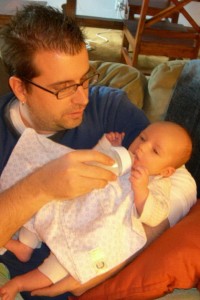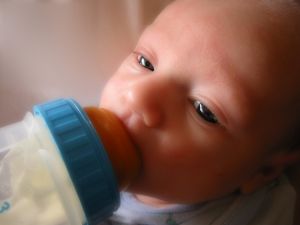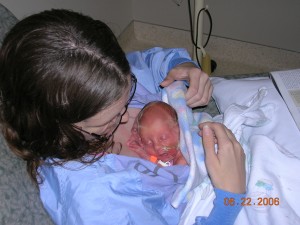By Sonya Fehér, leader for South Austin API (Texas, USA) and blogger at MamaTrue.com
 If we’re staying at home to be with our babies full-time, we don’t have to pump milk or offer bottles. We can delay extended separations until our children are older, take our babies with us to run errands, go to appointments, or when we meet friends. And most of the time, we do. We spread out activities, so we can avoid taking Baby in and out of the car for multiple stops. We keep the volume low on the car stereo. We prioritize what we need to get at the grocery and find ways to entertain or distract Baby, so that we can get everything on the list. And we likely plan it all around when Baby may take a nap. That’s what stay-at-home moms do.
If we’re staying at home to be with our babies full-time, we don’t have to pump milk or offer bottles. We can delay extended separations until our children are older, take our babies with us to run errands, go to appointments, or when we meet friends. And most of the time, we do. We spread out activities, so we can avoid taking Baby in and out of the car for multiple stops. We keep the volume low on the car stereo. We prioritize what we need to get at the grocery and find ways to entertain or distract Baby, so that we can get everything on the list. And we likely plan it all around when Baby may take a nap. That’s what stay-at-home moms do.
What differs for attached moms is that we are likely also sleeping with or near our babies during the night, wearing them during the day, and nursing them every hour or so. Being an Attachment Parenting (AP) stay-at-home mom is an intense 24-hours-a-day/365-days-a-year job.
Why Stay-at-Home Breastfeeding Mothers Pump
While all of the mothers that I interviewed agreed that breastmilk from the breast is best, AP stay-at-home moms have many reasons to pump: Continue reading Pumping for Stay-at-Home Moms
 When I was pregnant for the first time, I wasn’t sure what I would do and I was actually a little afraid of committing to breastfeeding and being my child’s sole source of sustenance.
When I was pregnant for the first time, I wasn’t sure what I would do and I was actually a little afraid of committing to breastfeeding and being my child’s sole source of sustenance.